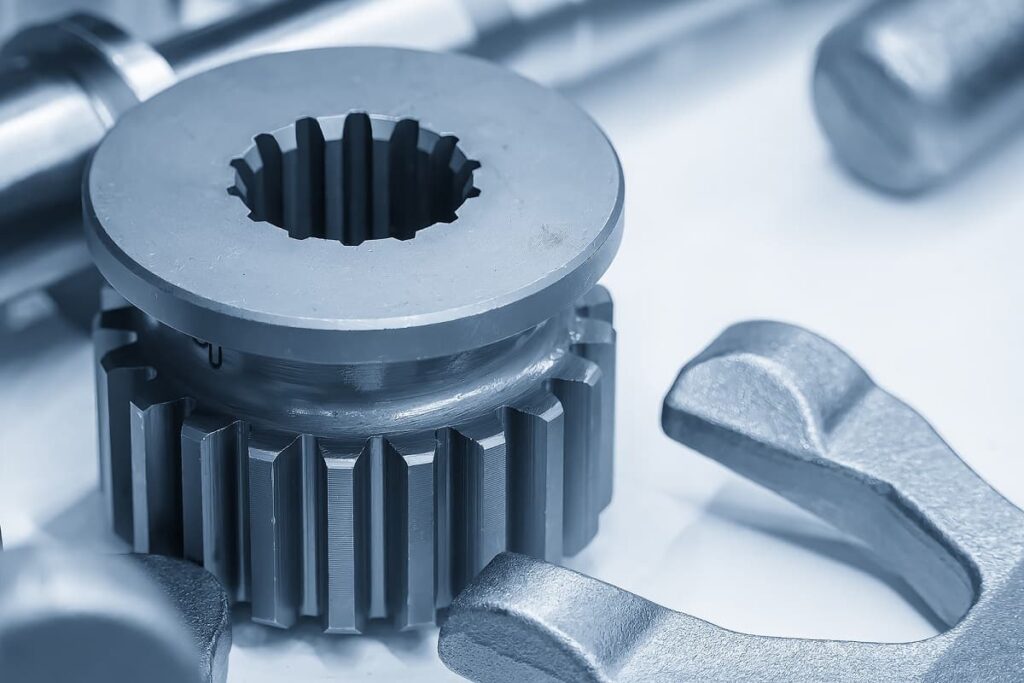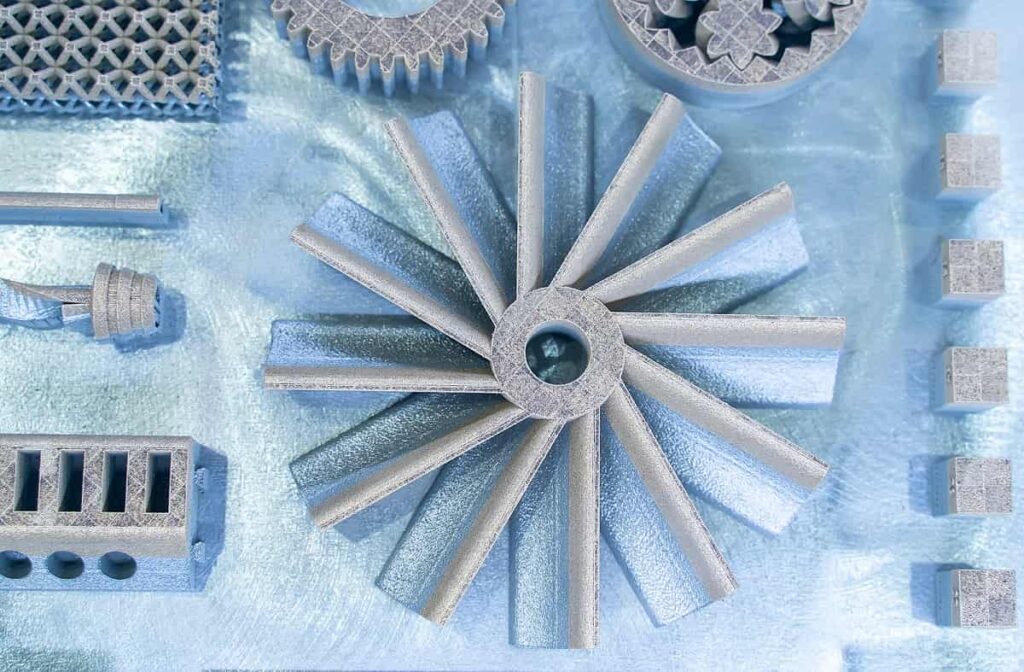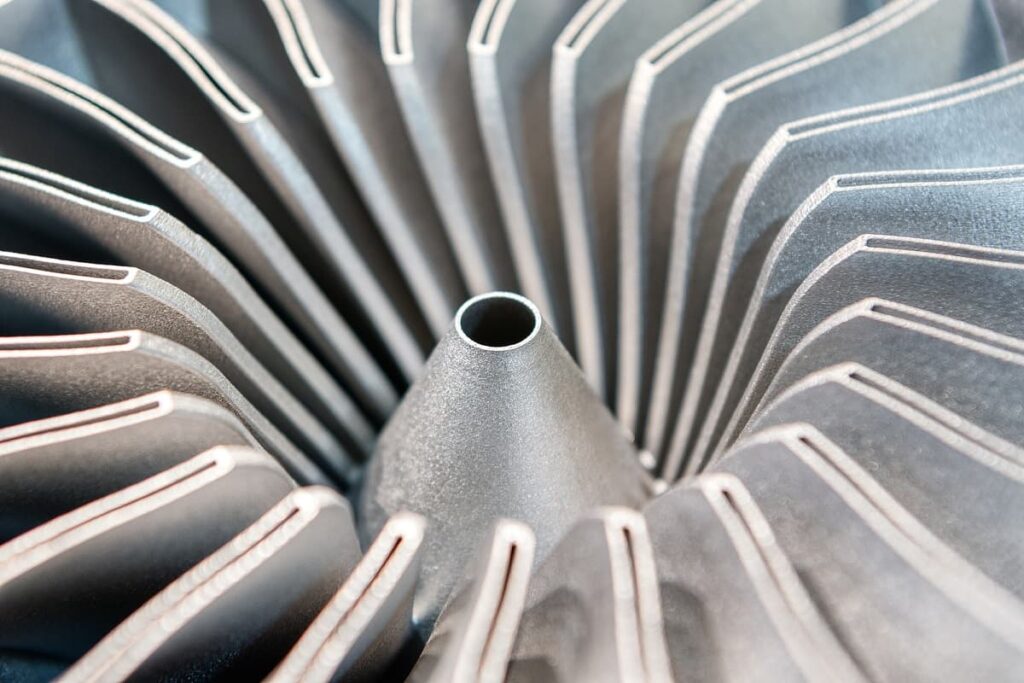Metal 3D Printing Stocks – A Bunch of Broken Promises
Table of contents

Managing a portfolio becomes a whole lot easier when you let the world peek under your kimono to see how the sausage gets made. Why we’re holding 36 tech stocks in our portfolio is clearly documented in past research pieces for the world to see. How we move forward becomes a function of what exposure we’d like. For example, we’re currently overweight AI (a large part of that being our position in NVIDIA) and significantly underweight cannabis, space, and 3D printing.

The 3D printing underweight has been exacerbated by our recent move out of the distributed manufacturing thesis which raises a question. Do we want more exposure to 3D printing?
Investing in 3D Printing
We’ve been writing about 3D printing for nearly a decade, and have divided the theme into three main areas of interest:
- Distributed manufacturing – Xometry, Protolabs, Materialise
- 3D bioprinting – BICO Group, Organovo
- Metal 3D printing – Desktop Metal, Velo3D, Markforged
Today, we’re vetting three metal 3D printing stocks, all of which fall below our $1 billion market cap threshold.
- Desktop Metal (DM) – the most popular of the lot, Desktop Metal’s acquisition of ExOne made them less attractive in our eyes. That’s because the entire appeal of Desktop Metal was their P50 production platform which – the last time we checked – just wasn’t seeing the traction we had hoped for.
- Velo3D (VLD) – the second most popular 3D metal printing stock which largely surrounds their relationship with SpaceX. We don’t invest in companies that are overly reliant on any single company.
- Markforged (MKFG) – the only of the three that we liked (the last time we looked), this company is also the smallest of the three with a market cap of just $200 million. Since we avoid small companies like the plague, how is it possible for us to like Markforged? Keep reading.
And here’s how much their market caps have declined since the last time we looked – almost one year ago to date:

Let’s start by taking an updated look at the most promising of the three, Desktop Metal.
Desktop Metal Update
Desktop Metal describes their P-50 production platform as a “truly groundbreaking product” which has all the elements investors look for in an attractive business model – several million dollars up front to purchase, recurring revenue from consumables, and an admirable gross margin of over 50%.

So why was Desktop Metal’s gross margin for 2022 in the single digits? The answer is rather complicated.
In 2021, Desktop Metal embarked upon a series of acquisitions – 10 to be precise – which resulted in lots of goodwill and intangible assets being added to their balance sheet. As for the $639 million in goodwill, $499 million was written off last year which shows they squandered a large chunk of that SPAC cash. As for the intangibles, around $220 million remains on their books of which they amortize some as part of their cost of goods sold (COGS). This uncommon practice is also observed with Xometry and results in gross margins that are artificially low. If we remove amortization, along with some other bits and bobs, it’s actually 3X higher – around 22.5% in 2022, down from 27% in 2023. We’re told this number should move to “north of 30% in 2023,” a result of cost cutting. As to whether that increase in profitability can be attributed to the P-50, Desktop Metal continues to offer up shifty responses to analysts regarding how many platforms they’re selling and to whom.
Reading through the latest earnings call you’ll see the first questions posed by analysts surround the P-50 production platform. Desktop Metal continues to provide evasive answers which is quite concerning. Towards the end of the call, an analyst asked if we might be privy to some customer names. Management’s shifty response is capped off with a comment that tries to deflect attention to other product offerings:
I know there is a lot of interest in what we do, particularly in P-50, because it’s a system that’s many times faster than anything else that’s out there. But we have a full portfolio of products. And if you look at our run rate, that’s like $0.25 billion worth of lots of stuff for which a significant portion is binder jet. So, we are the de facto leader in the binder jet space.
Credit: Desktop Metal
You’d be excused for thinking that the P-50 just isn’t delighting customers in the way the company expected, and they’re continuing to see problematic pilots rather than a superior product that customers can’t get enough of. Providing actual unit sales numbers (not placements) would be a quick way to alleviate these concerns rather than continuing to be evasive when probed. Further revenues segmentation – aside from “Products / Services” – would be useful as well. The investor deck says 24% of 2022 revenues came from “high-margin consumables/ services / subscription,” so maybe it’s time to spell that out in their financial filings with the SEC.
Revenue growth guidance for 2023 ranges from 0% to 24% which means we’ll need to wait until the second half of 2023 to see what growth will look like since the first half of the year is historically lower. Note that the upper guidance of $260 million is actually what their 2022 guidance was, and they missed that by a country mile. That wasn’t nearly as bad as the $329 million in organic revenues they promised for 2023 in their glossy SPAC deck. So, when the management team continues to provide elusive responses when probed about how many P-50s are being sold, it’s a concern. Let’s just hope the $184 million in cash remaining on their books will tide them through to profitability.
Velo3D Update
Velo3D has also failed to live up to their SPAC expectations, guiding towards $120 – $130 million for 2023 when the glossy SPAC deck promised $162 million. The bigger problem we see is a real gross margin (none of that amortization stuff) that’s moving in the wrong direction.

The latest investor deck has a slide dedicated to showing how they plan to improve that gross margin to 30% by the fourth quarter of this year through price increases, long-term supply contracts, and improving material efficiencies. Provided they can achieve this goal, the next hurdle would be their strong dependency on SpaceX, their largest customer which was responsible for 47% of 2022 revenues. (We don’t get involved with companies that have such a strong dependence on a single customer.) Last quarter their cash stockpile dropped by $33 million to $80 million which means they probably have about a year’s worth of runway left before needing to raise more money by either selling depressed shares or taking on debt in a time when interest rates have soared.
Markforged Update
Assuming there’s no deep recession this year, Markforged anticipates full year 2023 revenues to be within the range of $101.0 million – $110.0 million. Compare that to the $226 million the SPAC deck promised for 2023, or the $101 million they brought in last year, and it’s clear that growth just isn’t there. As for those juicy 55% margins we noted in our last piece on Markforged, those are now “expected to be in the range of 47% – 49%.” When you look at what was promised in the SPAC deck vs what the management team is delivering, it appears downright incompetent.

We liked what we saw the first time around, but not so much what we’re seeing down the road. With $167 million of cash and short-term investments on the books, Markforged ought to be good for at least another year before having to raise cash. The best-case scenario seems to be that they hit the upper range of their guidance and show investors 10% revenue growth while minimizing cash burn so their war chest can tide them over to profitability.
Investing in Metal 3D Printing
Let’s pretend all three of these metal 3D printing companies merged and realized all kinds of synergies such that the blended gross margin was in the 30-40% range. Revenue segments are clearly broken down between hardware sales, consumables, and recurring revenues so that each can be monitored for growth and profitability. The collective entity now dominates global market share in metal 3D printing and no single customer accounts for more than 10% of total revenues. Now it’s easy to visualize a theme that might be more attractive than what exists today, though you’d still need to look past how all three companies misled investors in their glossy SPAC decks.
This is where our “don’t invest in companies with a market cap of less than $1 billion” rule makes the decision easy. We’re tossing all three of these companies into a single bucket in our disruptive tech stock report and avoiding all of them until one or more breach a market cap of $1 billion (without being driven by hype or Redditors). Desktop Metal might be the first, but we’re only interested if they start to report on more granular revenue segmentation, expand their gross margins north of 30% as they claim will happen in 2023, and stop being so evasive when queried about the success they’re having with the flagship platform that is what attracted us to the company in the first place.
Conclusion
There’s a temptation here to look at these depressed share prices and try to see value. The “get in while you can” mentality will try and sell these depressed share prices as opportunities, and that may well be the case. But just remember that these are all SPACs, and that asset class has royally underperformed because of reasons we’ve warned about since they first emerged. Some SPACs will inevitably become value traps, so we’re always content to sit on the sidelines and wait for the glorious winners to emerge before climbing on board. Sacrificing some upside in exchange for assurance that a business won’t go pear-shaped is a reasonable tradeoff.
Sign up to our newsletter to get more of our great research delivered straight to your inbox!
Nanalyze Weekly includes useful insights written by our team of underpaid MBAs, research on new disruptive technology stocks flying under the radar, and summaries of our recent research. Always 100% free.


















I have been On Board and Excited for 3D printing…well, for a long time. It hasn’t happened.
While young I thought I had what it took to be painter (artist). After exposure no one agreed.
Hahaha… We’ve also been watching the space closely and didn’t fare well in distributed manufacturing. Such is the high-risk world of tech investing. We were discussing this internally and wondering what funding is going into 3DP startups – if any – and what those technologies might bring to the table. Maybe something worth investigating.
Not too good at Comment protocol either
You can comment any old way you like Mark because you’re helping to pay the bills 😉
Did they squander that spac cash if the acquisitions were stock for stock?
The goodwill balance and write down shortly afterwards means they overpaid regardless of what tender was used.